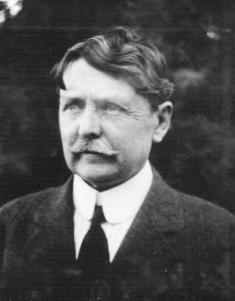Jupiter’s Moons
December 3, 1904: Himalia is discovered. At the time, it was simply called Jupiter VI because it was the sixth moon found to be orbiting the gas giant. It received its present name in 1975. It is Jupiter’s largest irregular satellite and the sixth largest in overall size. Only the four Galilean moons have a greater mass than Himalia. It is named after the nymph Himalia who bore Zeus three sons, according to Greek mythology. Zeus is the Greek equivalent to the Roman god, Jupiter. Himalia is Jupiter’s most easily observed small satellite even though another one, Amalthea, is brighter. That moon is closer to Jupiter making it more difficult to see. Himalia was discovered by Charles Dillon Perrine at the Lick Observatory.
The Lick Observatory is owned and operated by the University of California. The observatory is perched on the summit of Mount Hamilton which is part of the Diablo Range located east of San Jose. The mountain top observatory was the first to be permanently occupied. It was built in the Classical Revival style between 1876 and 1887 after James Lick left a bequest of $700,000 (about $22 million today). He requested the site for the building of the observatory and is buried there. He also wished for Santa Clara County to build a “first class road” to the summit, which they did and completed it in 1876. He was a carpenter and piano maker by trade, but made his money in land speculations and at the time of his death in 1876 at the age of 80 was the wealthiest man in California.
The first telescope installed at Lick was a 12-inch refractor and it was able to make “exquisite photographs of comets and nebulae”. In 1888, a 36-inch refracting telescope was installed and it was the largest such telescope in the world at the time. It was this telescope which was used to discover Amalthea, the fifth moon of Jupiter to be found, and then on this day, Perrine’s discovery of Himalia. He was also able to find the seventh moon, the following year which was finally named Elara in 1975. Perrine worked at Lick Observatory from 1893 until 1909 and then became of the director of the Argentine National Observatory from 1909 until 1936. He found several comets during his lifetime and promoted the study of astrophysics in Argentina. He was able to get a larger telescope promised, but it was not installed until after his retirement.
Jupiter is the largest planet in our Solar System. It’s mass is just 1/1000 that of the Sun and is 2.5 times heavier than all the other planets combined. Jupiter and Saturn are gas giants while Uranus and Neptune are ice giants. Jupiter has at least 67 moons. It is one of the brightest objects in the night sky, able to even cast a shadow. The only things brighter are our own Moon and Venus. It is so far away from the Sun, it takes almost twelve years to circle our star. Because it is a gas giant, it doesn’t have a well-defined surface, but it would be impossible to land there anyway because of the enormous pressure of the atmosphere. It has a rapid rotational spin giving it a shape that is greater at the equator than at the poles. The atmosphere shows several bands and the Great Red Spot, which is a giant storm that has been known to exist since at least the 17th century. The largest moon, Ganymede, has a larger diameter than Mercury.
Astronomy? Impossible to understand and madness to investigate. – Sophocles
Astronomy is not only pleasant but also very useful to be known; it cannot be denied that this art unfolds the admirable wisdom of God. – John Calvin
f the Lord Almighty had consulted me before embarking upon his creation, I should have recommended something simpler. – Alfonso X of Castile, regards the complexity of Ptolemaic model of the universe
From our home on the Earth, we look out into the distances are strive to imagine the sort of world into which we are born. . . . But with increasing distance our knowledge fades, and fades rapidly, until at the last dim horizon we search among ghostly errors of observations for landmarks that are scarcely more substantial. The search will continue. The urge is older than history. It is not satisfied and it will not be suppressed. – Edwin Hubble
Also on this day: Bhopal – In 1984, the Union Carbide plant in Bhopal, India spewed a huge cloud of noxious gases.
No More Beach Parties – In 1982, Times Beach, Missouri was found to be toxic.
Have a Heart – In 1967, the first heart transplant was performed.
Neon – In 1910, the Paris Motor Show opened with some new sign display.
Battle of the Eureka Stockade – In 1854, the battle takes place.
* “Perrine” by Observatorio Nacional Argentino – Observatorio Astronómico Córdoba – Museo Astronómico. Licensed under FAL via Commons – https://commons.wikimedia.org/wiki/File:Perrine.JPG#/media/File:Perrine.JPG

leave a comment